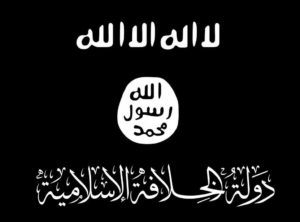
The terrorist group known as Daesh (or ISIL, ISIL) is the sad and arguably preventable metamorphosis of al-Qa’ida in Iraq (AQI). The group is now more successful in terms of acquisition of land, capital, followers and propaganda than it’s predecessor ever hoped.
AQI, led by al-Zarkawi, was successful in creating the sectarian violence pitting Shia against Sunni. Iraq was overwhelmingly set ablaze with chaos and instability. However, as a result of the “surge” and killing of al-Zarkawi (and others) the group was largely defeated by 2009, giving the United States the opening for withdrawing it’s troops in 2011.
Three primary factors created the environment and opportunity for AQI to turn into Daesh.
- First the 2011 withdrawal of American troops created an environment where a second insurgency would not be effectively crushed.
- Second, in 2012, then Prime Minister of Iraq Nouri al-Maliki, motivated by paranoia and a history of Sunni oppression against his friends, colleagues and family made overwhelming and violent moves against Sunni politicians and protestors to crush dissent. Al-Maliki’s moves had the opposite of the desired effects of creating stability and made the Sunni minority even more resentful and ready to fight the establishment. Remember that prior to the 2003 American invasion of Iraq, the Sunni, although a minority group, retained overwhelming power and influence in government. Now the tides had turned.
- Third, in the summer of 2011, the new leader of AQI al-Baghdadi, with its forces camped in the western desserts of Iraq sends forces to Syria to fight the forces of Bashar al-Assad. The battle hardened AQI members quickly achieve some of the only victories against Assad forces. Recruitment soars and operations continue. AQI captures land, rob banks, steal oil for sale on the black market, control trade roads and run extortion campaigns to raise funds.
AQI now reemerges as a member heavy and funding rich group. AQI re-brands as the DAESH or Islamic State of Iraq and Syria (or Islamic State of Iraq and the Levant). Daesh starts breaking the walls of prisons to free criminals and Sunni dissidents, who in turn join its ranks. Daesh sets its eyes back on Iraq, with it’s Sunni populations angry and already striking against the Maliki regime.
In 2014, Daesh begins invasions of Sunni cities such as Fallujah, Takrit, Ramadi and Mosul. American troops are not present to stop them. Iraqi troops overwhelmingly flee, rather than fight. The Sunni populace welcomes Daesh into their cities. Daesh forces are made up of former AQI members, former Ba’athists, foreign fighters and everyday Sunni’s tired of the Maliki government. To this day, top military leadership of Daesh is made up of former Ba’athist military leaders.
Arguably, if American forces had remained and the Maliki government had not angered the Sunni population to the point of embracing Daesh, the rise of the group may have been hampered to a point of non-existence. The Syrian civil war also provided Daesh with rich opportunities to startup anew.
